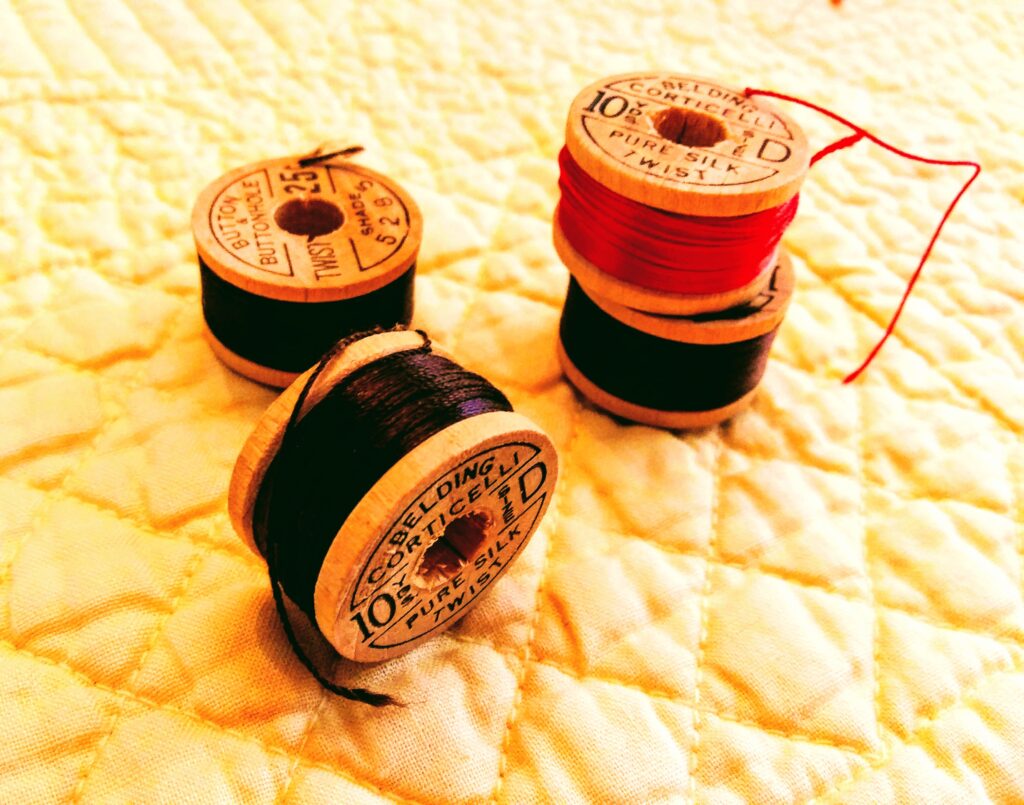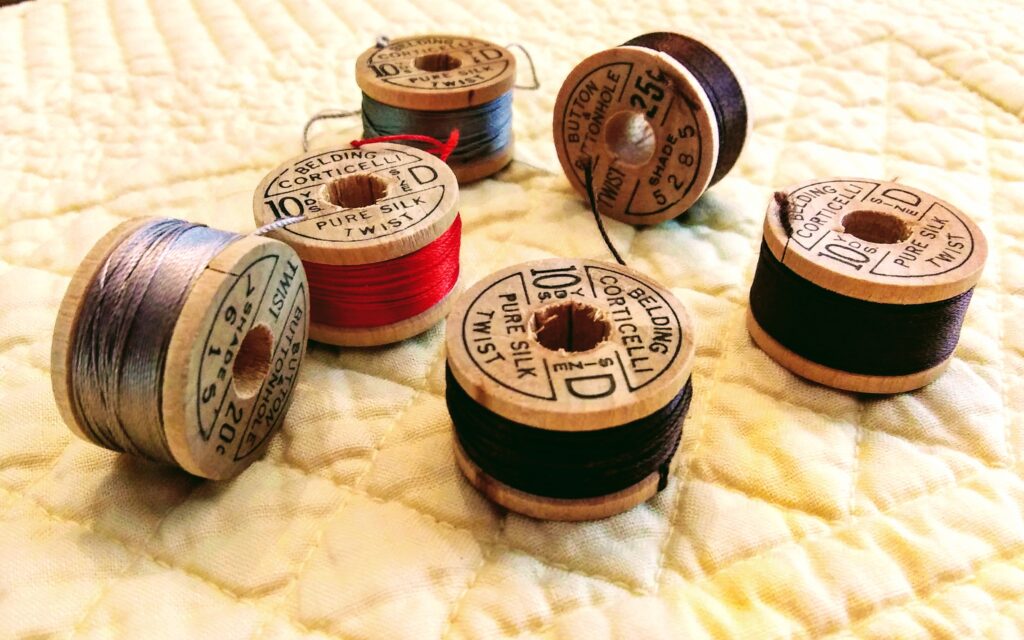Today while out junk store shopping, I found these six wooden spools of Belding Corticelli silk thread. The spools are more like bobbin-size rather than full size spools of thread.
I have never seen this size before, so I purchased them for .50 cents for the whole bag. I looked online for more information about this unusual spool of thread.
There are three spools of brown colored thread, two of taupe colored thread and one of orange colored thread. They are marked Button Buttonhole Twist with different shade numbers listed, Size D, each spool holding ten yards of silk thread. The vintage spools were stamped with either 20 or 25 cents.
Apparently this pure silk twist was used to sew on buttons and make buttonholes in garments.

History of the Corticelli Silk Company
In 1832, Samuel Whitmarsh planted 25 acres of mulberry trees in Florence, Massachusetts with the hopes of raising silkworms to make silk.
Mr. Whitmarsh then opened a silk mill in Leeds, Massachusetts called the North Hampton Silk Company. He, also, briefly ran an utopian community and believed in equal rights for all. He was against slavery and was an abolitionist.
Sojourner Truth, a former slave, who became nationally known for equal rights, was a member of the Florence community. She purchased a house on Park Street where she lived until 1857.
In 1885, Samuel L. Hill, a spiritual leader and manager, of then Nonotuck Silk Company, invented a machine to spin silk smooth enough to be used in sewing machines. The Nonotuck Silk Company began to use the Corticelli name on some of their silk products. Hill’s home located on 31-35 Maple Street in Florence became known as a stop on the Underground Railway.
About this time the production of silk moved to China and Japan, since the US workforce was not cost-effective to use.
In 1922, the Nonotuck Silk Company merged with the Brainerd and Armstrong Company. In the 1920’s the Nonotuck Silk Company permanently changed its name to the Corticelli Silk Company. Then the Corticelli Silk Company merged with the Belding-Heminway Company. (The Belding Brothers & Company previously merged with the Heminway Silk Company in 1925). The companies then did business as Belding-Heminway-Corticelli.
I know the history gets a little complicated with the many company mergers at this point.

At one time, the Corticelli Silk Company was one of the largest producers of silk thread in the world. Even today the name brings to mind quality silk products and vintage spools of silk thread are still found on some internet sales sites.
In 1930 the Corticelli Company went out of business. In 1932, the Belding-Heminway company also went out of business and their last mill in Michigan closed down.
Ending Notes on the Corticelli Silk Company
With Juneteenth in a few days, I thought this was an appropriate blog for the week.
The history of Corticelli silk thread tells an usual story with freedom and equal rights for all along with the production of silk thread.


N. P.,
Thank you for reading our blog and for the nice comments. I’m glad you enjoyed this blog on silk thread. Have a happy day.
FARMHOUSE MAGIC BLOG.COM
M.Z.,
Thank you for your recent comment on the media. That’s a pretty large topic to cover. Can you narrow it down some? Have a wonderful Farmhouse Magic Day.
FARMHOUSE MAGIC BLOG.COM
C.P.,
Thank you for reading our blog. I see you like gardening. Have a wonderful day.
FARMHOUSE MAGIC BLOG.COM